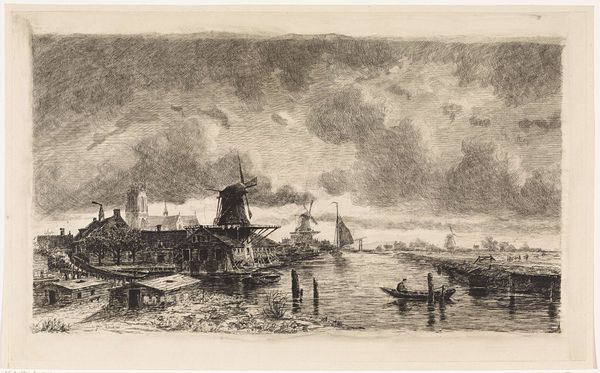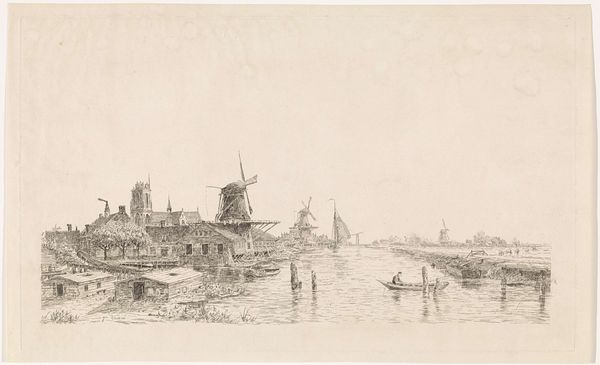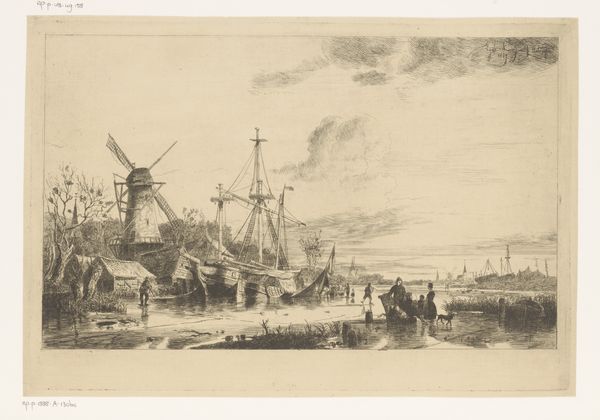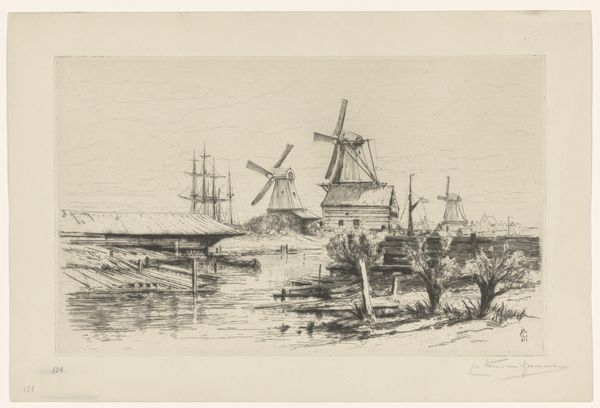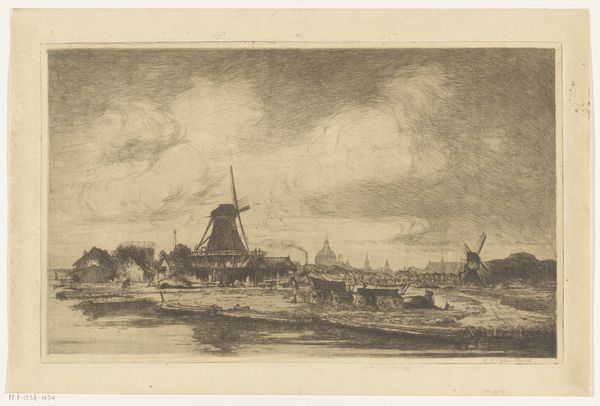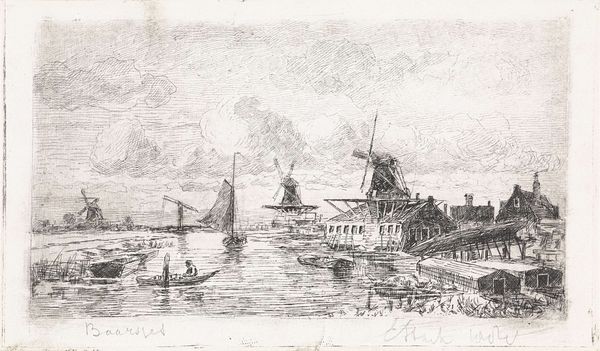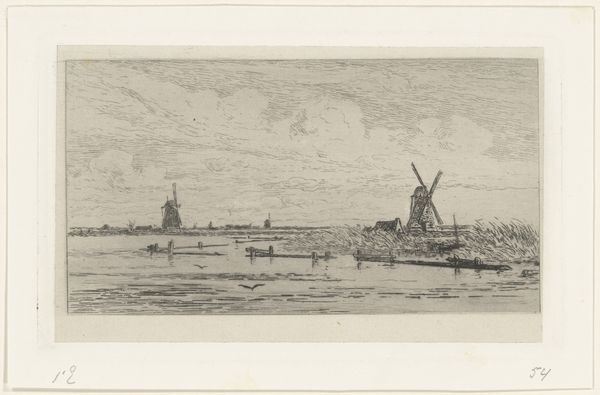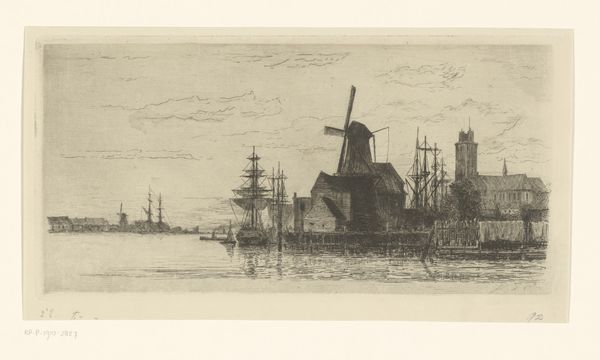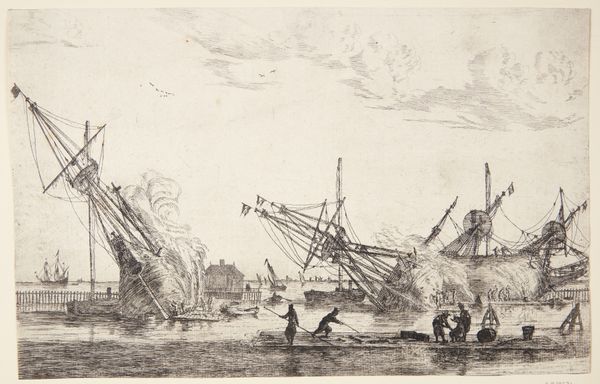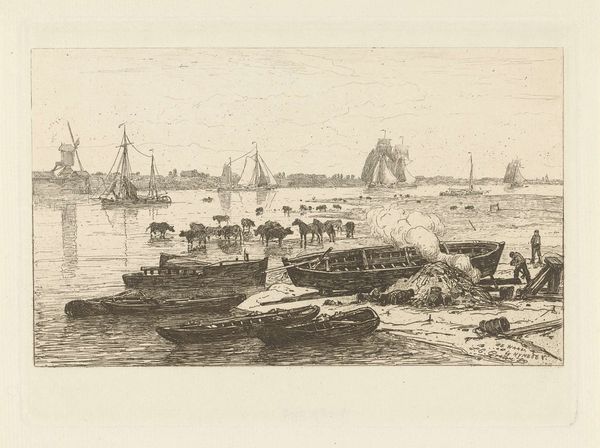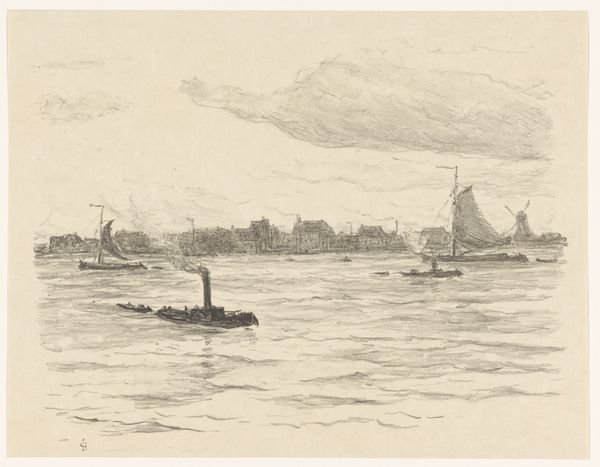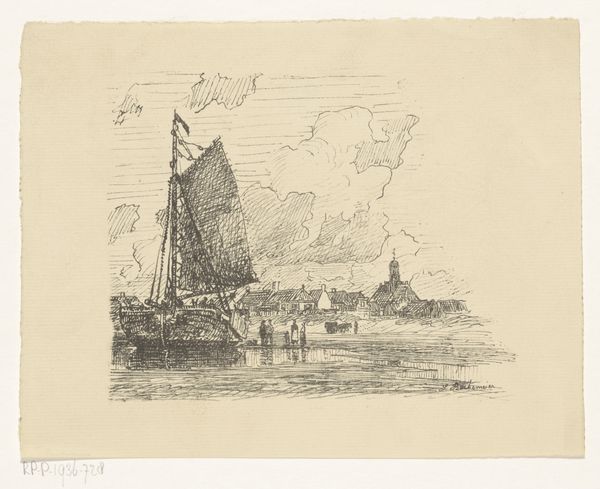
print, etching
#
dutch-golden-age
# print
#
etching
#
landscape
#
river
#
etching
Dimensions: height 275 mm, width 456 mm
Copyright: Rijks Museum: Open Domain
Elias Stark created this etching of a river landscape with a village and a sawmill. Look closely, and you'll see how the visual codes embedded within the artwork hint at the social and economic realities of the time it was made. Likely created in the late 19th or early 20th century in the Netherlands, this image reflects the country's dependence on its waterways for industry and trade. Notice the prominent windmill and the sawmill, symbols of Dutch ingenuity and industry. These are placed in the foreground, perhaps suggesting their importance to the local economy. A church tower rises in the background, signifying the enduring influence of religion on Dutch society. To truly understand a piece like this, the historian needs to dig into the archives, to understand how geographical, religious, historical, and economic factors might have shaped not just the artwork, but the artist's very worldview. Art doesn't exist in a vacuum, and its meanings are always contingent on its social and institutional context.
Comments
No comments
Be the first to comment and join the conversation on the ultimate creative platform.
